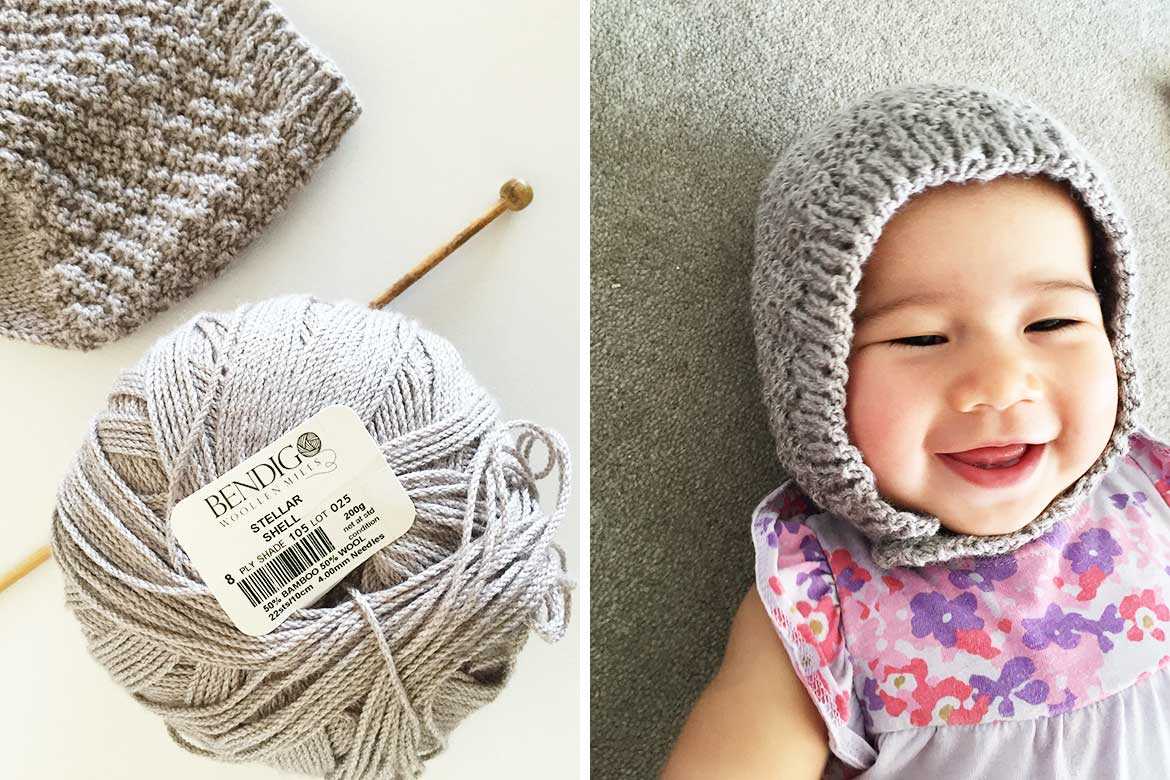
Looking to knit a cute and cozy hat for your little one? You’ve come to the right place! In this article, we’ll be sharing a free baby hat knit pattern that is perfect for beginners and seasoned knitters alike. Whether you’re expecting a new addition to your family or want to make a heartfelt gift for a friend, this pattern is sure to impress.
This baby hat knit pattern is designed to keep your little one warm and stylish. It features a simple ribbed brim for a snug fit, and a stockinette stitch body for a smooth and classic look. The pattern is written in multiple sizes, so you can create hats that will grow with your baby.
What makes this pattern even better is that it’s completely free! We believe that everyone should have access to high-quality knitting patterns without breaking the bank. So grab your favorite yarn and knitting needles, and let’s get started on this adorable and practical baby hat!
Why Knit Baby Hats?
Knitting baby hats can be a rewarding and enjoyable activity for many reasons. Not only are they a quick and relatively easy project to complete, but they also serve a practical purpose. Keeping a baby’s head warm is essential, especially during colder months, and a hand-knit hat provides a cozy and stylish solution.
1. Personalized Gift: Knitting a baby hat allows you to create a personalized gift for a loved one or friend who is expecting or has a newborn. You can select yarn in their favorite colors or choose a pattern that matches their style. The love and effort put into a hand-knit gift make it extra special.
2. Cost-effective: Making your own baby hats can be a cost-effective alternative to purchasing them. While there are many adorable store-bought options available, knitting your own hats allows you to choose affordable yarn and create multiple hats from a single skein. This can be especially helpful if you have several babies in your life or want to donate hats to a charity.
3. Creativity and Skill-building: Knitting baby hats provides an opportunity to exercise your creative muscles and explore different stitch patterns and color combinations. It can also help you improve your knitting skills, from basic techniques to more advanced shaping. With each hat you knit, you’ll gain confidence in your abilities and develop new techniques.
4. Sustainable and Eco-friendly: Knitting baby hats allows you to engage in a sustainable and eco-friendly activity. By using natural fibers or recycled yarn, you can reduce the environmental impact of your crafting. Hand-knit items are also less likely to contribute to the disposable fashion culture, ensuring that your hats can be enjoyed and cherished for years to come.
5. Emotional and Therapeutic: Knitting has been known to have a calming and therapeutic effect, reducing stress and promoting mindfulness. It can provide a sense of accomplishment and satisfaction, especially when you see a baby happily wearing the hat you knit. The act of knitting itself can be a source of joy, allowing you to relax and unwind while creating something beautiful.
The benefits of knitting baby hats by hand
Knitting baby hats by hand is not only a creative and fulfilling hobby, but it also offers a plethora of benefits for both the knitter and the baby who receives the hat. Hand-knit baby hats are not only adorable and stylish, but they also provide essential warmth and comfort for a newborn’s delicate head.
One of the greatest advantages of knitting baby hats by hand is the ability to customize them according to personal preferences and needs. With a variety of patterns and colors available, knitters can create hats that perfectly match a baby’s outfit or nursery theme. Additionally, hand-knit hats can be easily adjusted in size to fit newborns of different head sizes, ensuring a snug and secure fit.
Aside from their aesthetic appeal, hand-knit baby hats also boast functional benefits. The use of natural fibers like wool or cotton ensures breathability and temperature regulation, keeping the baby’s head warm in winter and cool in summer. These materials also tend to be softer and more gentle on the baby’s delicate skin, minimizing the risk of irritation or discomfort.
Another advantage of knitting baby hats by hand is the opportunity it provides for bonding and connection. Crafting a handmade gift for a newborn can be a deeply personal and sentimental experience. It allows the knitter to pour love and care into every stitch, creating a one-of-a-kind item that holds special meaning. When the baby wears the hand-knit hat, it becomes a tangible symbol of the knitter’s affection and thoughtfulness.
In conclusion, knitting baby hats by hand offers a wide range of benefits. From the ability to customize and adjust the hat to the use of natural fibers for comfort and breathability, hand-knit baby hats are both practical and meaningful. Whether it’s for personal enjoyment or as a heartfelt gift, knitting baby hats is a rewarding activity that brings joy and warmth to both the knitter and the baby who receives the hat.
Choosing the right materials
When it comes to knitting a baby hat, choosing the right materials is essential to ensure both comfort and durability. The right materials will not only provide warmth for the baby, but they will also create a soft and gentle texture against their delicate skin. Considering the nature of the project, it is important to use high-quality materials that are both safe and hypoallergenic.
Yarn: One of the most important considerations when choosing yarn for a baby hat is its fiber content. It is recommended to use a soft, lightweight, and easy-care yarn, such as cotton or acrylic. These materials are known for their durability, softness, and hypoallergenic properties, making them ideal for baby items. Avoid using yarns that are scratchy or have a high percentage of wool, as this may cause discomfort for the baby’s sensitive skin.
Needles:
When selecting the right needles for your baby hat project, it is essential to consider both the size and the material of the needles. The size of the needles will depend on the pattern and the desired gauge. It is recommended to use circular or double-pointed needles in a size suitable for the chosen yarn weight. Circular needles are particularly useful for knitting in the round and create a seamless finish for the hat.
Tip: When knitting a baby hat, using bamboo or wooden needles can provide more grip and control compared to metal needles, which can be slippery. This can be especially helpful for beginners or those who prefer a more secure grip while knitting.
Additional materials:
In addition to yarn and needles, there may be other materials required for the completion of the baby hat. This can include stitch markers, a tapestry needle for weaving in ends, and optional embellishments such as buttons or ribbon. It is important to ensure that any additional materials used are safe and suitable for baby items. Avoid using small or sharp objects that may pose a choking hazard.
Conclusion: Choosing the right materials for knitting a baby hat is crucial for creating a comfortable and safe garment for the little one. By selecting soft, lightweight yarn and appropriate needles, and considering any additional materials required, you can ensure that the baby hat will be both practical and adorable.
Exploring Different Yarn Types for Baby Hats
When it comes to knitting baby hats, choosing the right yarn is essential. Not only does it affect the overall look and feel of the hat, but it also determines its functionality and comfort. There are various yarn types available in the market, each with its own unique characteristics and advantages. Let’s explore some popular yarn options for knitting adorable and cozy baby hats.
Cotton Yarn:
Cotton yarn is a popular choice for baby hats due to its softness and breathability. It is gentle on the baby’s delicate skin and prevents irritation. Additionally, cotton yarn is machine washable, making it easy to maintain and keep the hat clean. It is ideal for warmer climates or babies who tend to sweat. However, cotton yarn may lack the stretchiness needed for certain hat patterns and may not provide as much warmth as other yarn types.
Merino Wool:
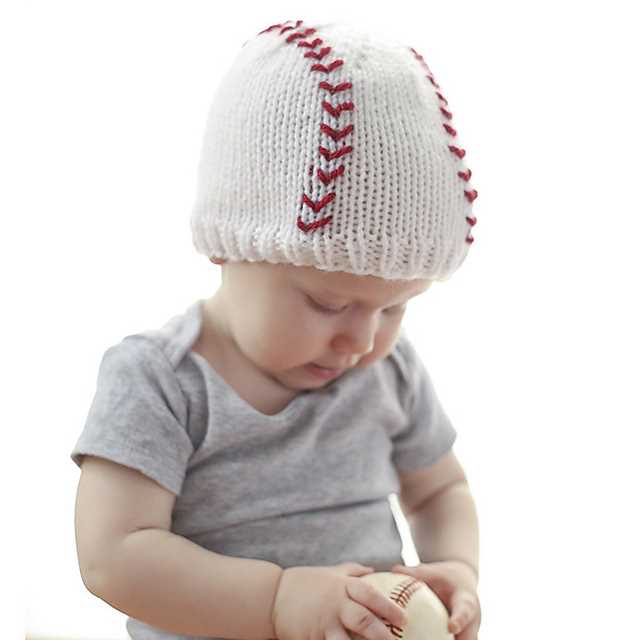
Merino wool is known for its luxurious softness, warmth, and excellent insulating properties. It is a natural fiber derived from Merino sheep, making it hypoallergenic and suitable for sensitive baby skin. Merino wool yarn is ideal for colder climates or winter baby hats, as it provides exceptional warmth and insulation. However, it requires special care during washing and may be more expensive compared to other yarn options.
Acrylic Yarn:
Acrylic yarn is a popular choice for baby hats due to its affordability, durability, and wide range of colors. It is synthetic and easy to care for, as it is typically machine washable and can withstand frequent use. Acrylic yarn is also known for its softness, but it may not be as breathable as natural yarn options. It is an excellent choice for budget-conscious knitters who want a practical and versatile yarn for their baby hat projects.
In conclusion, there are various yarn types to consider when knitting baby hats. Cotton yarn offers softness and breathability, merino wool provides warmth and insulation, and acrylic yarn is affordable and durable. Each yarn type has its own advantages and is suitable for different climates and preferences. It’s important to choose a yarn that not only looks good but also feels comfortable for the baby. So, experiment with different yarn types and find the perfect one for your next baby hat knitting project!
Essential Tools for Knitting Baby Hats
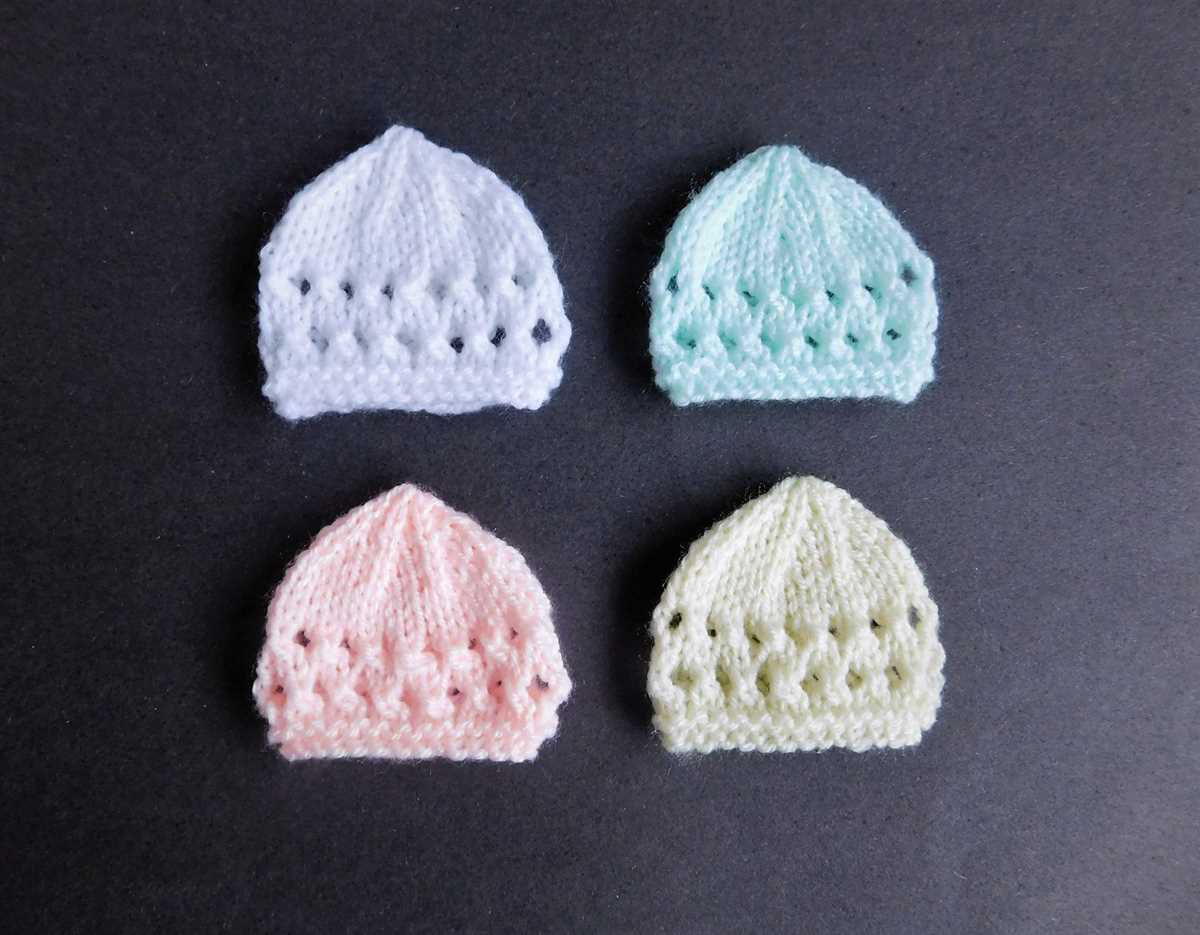
When it comes to knitting baby hats, having the right tools can make all the difference in creating a beautiful and comfortable finished product. Here are some essential tools that every knitter should have:
1. Knitting Needles:
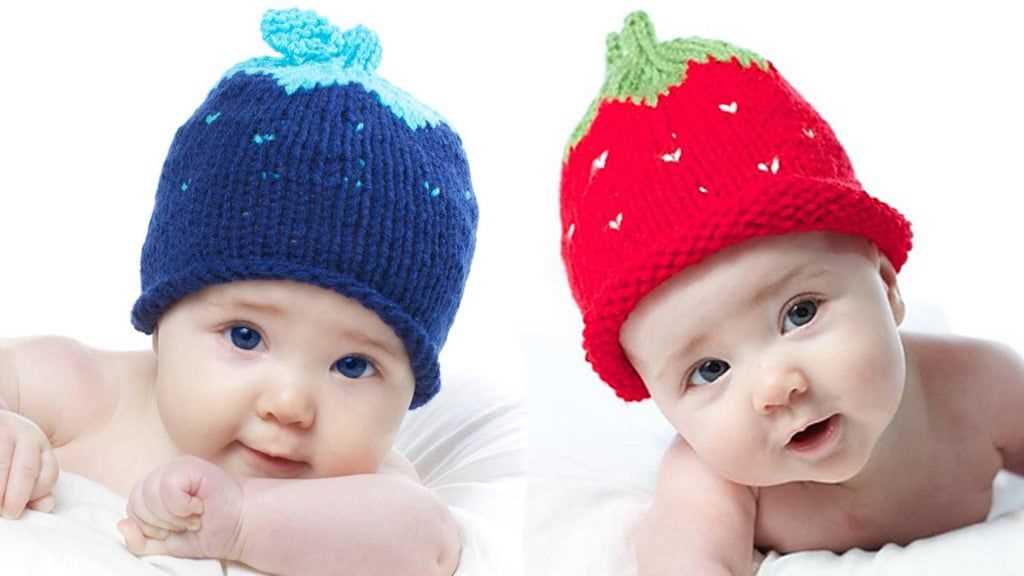
A good pair of knitting needles is the foundation of any knitting project. For baby hats, it is recommended to use circular needles in a size appropriate for the yarn weight being used. Circular needles allow for easy knitting in the round, creating a seamless and stretchy hat.
2. Yarn:
Choosing the right yarn for a baby hat is crucial. It’s important to select a soft and non-irritating yarn that is easy to care for. Baby-friendly yarns such as cotton or bamboo blends are great options. Make sure to choose a yarn that is machine washable for easy maintenance.
3. Stitch Markers:
Stitch markers are essential for keeping track of pattern repeats and shaping in a baby hat. They can be used to mark the beginning of rounds, stitch changes, or any other important points in the pattern. Having a variety of stitch markers in different colors or styles can help make the knitting process more organized and efficient.
4. Tapestry Needle:
A tapestry needle is used for weaving in loose ends and finishing touches on a baby hat. It’s important to choose a needle with a large eye that can accommodate the yarn being used. A sharp needle tip is also useful for picking up stitches or fixing any mistakes that may occur during the knitting process.
5. Measuring Tape:
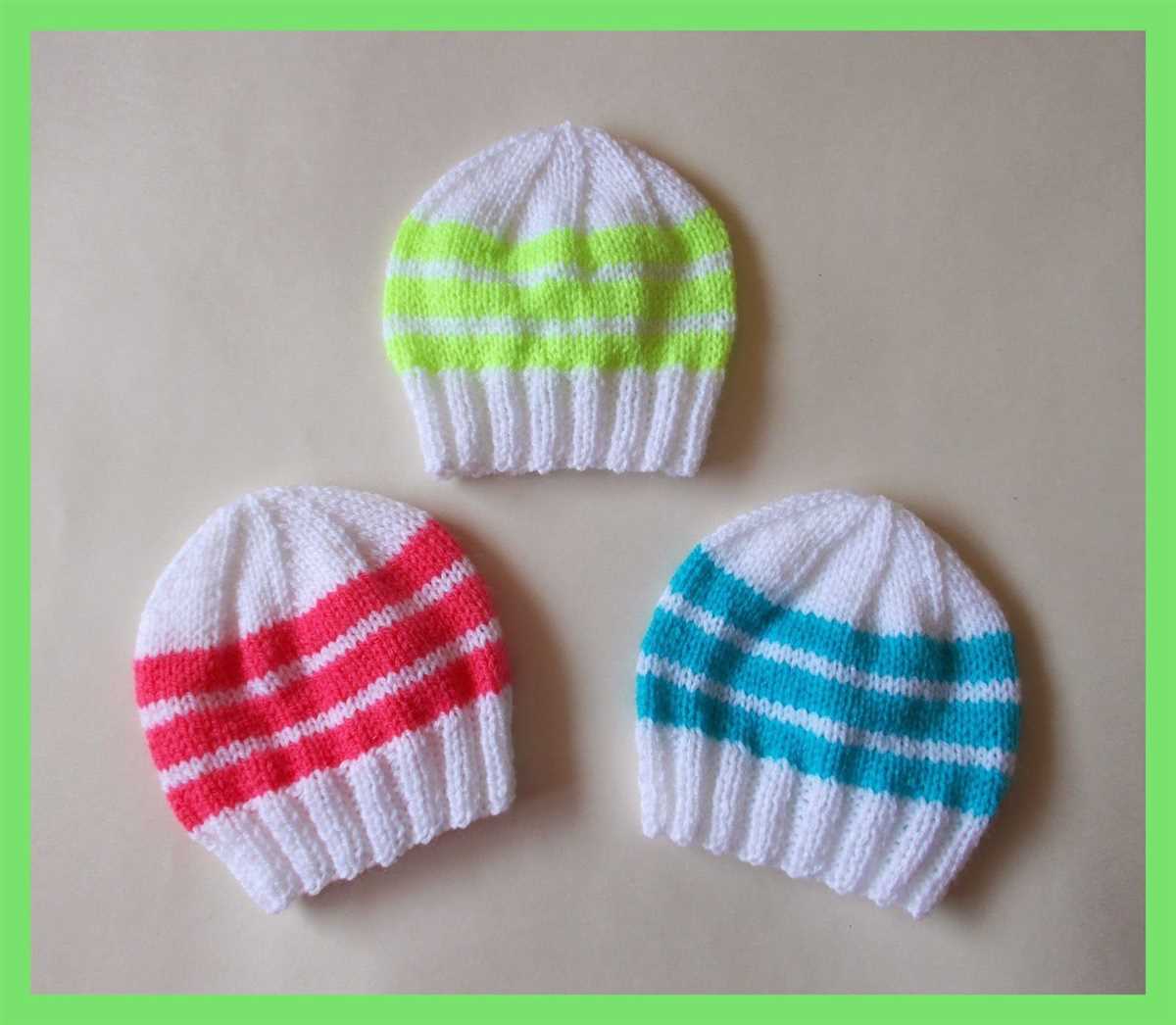
Accurate measurements are key when knitting baby hats to ensure a proper fit. A soft measuring tape can be used to measure the circumference of the baby’s head and determine the desired length of the hat. This will help in choosing the correct size pattern and making adjustments if necessary.
With these essential tools, knitters can create beautiful and cozy baby hats that are sure to be cherished by both parents and babies alike. So gather your supplies and get ready to knit adorable hats that are perfect for keeping little ones warm and stylish!
Understanding Knitting Patterns
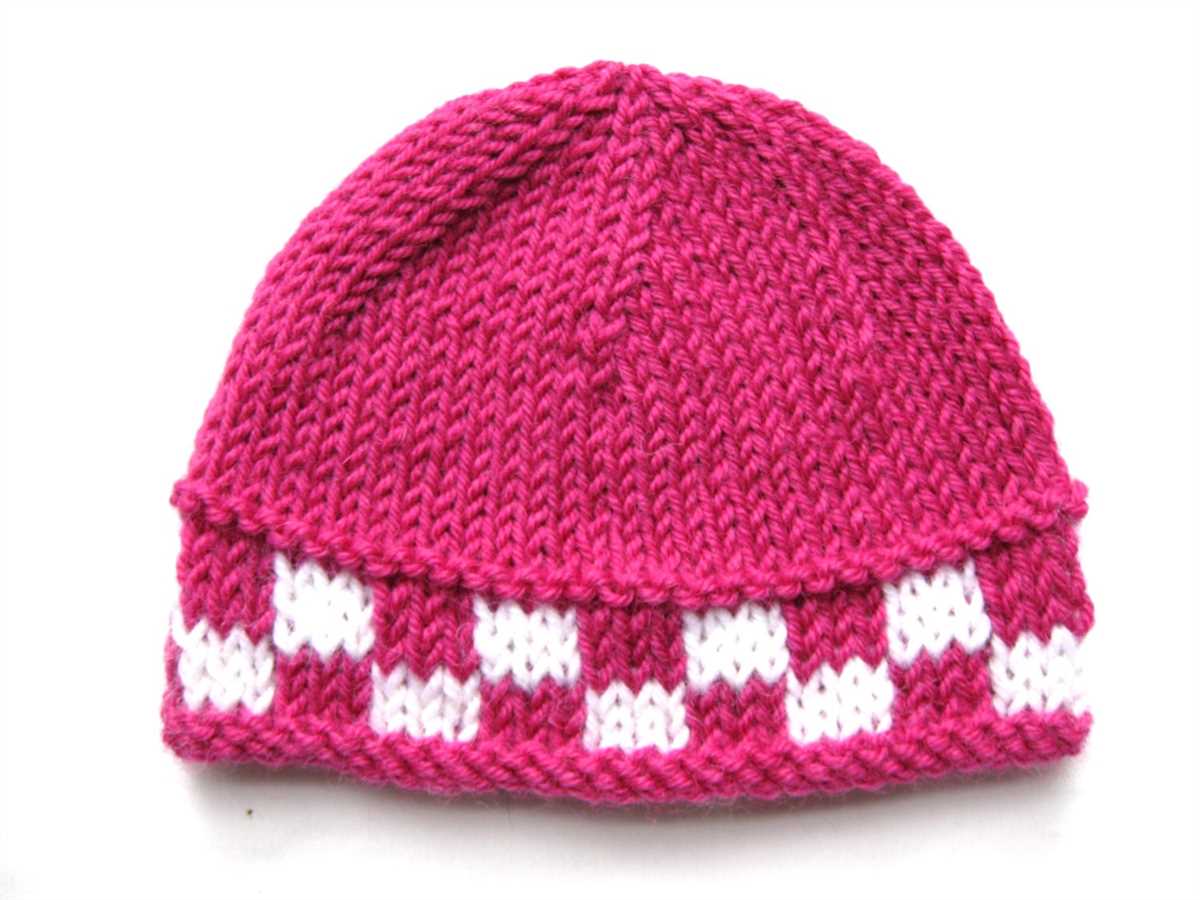
Knitting patterns are essential tools for any knitter who wants to create beautiful, handmade items. They provide a set of instructions that guide you through the process of creating a particular design. Whether you are a beginner or an experienced knitter, understanding how to read and follow knitting patterns is crucial for successfully completing your projects.
Components of a Knitting Pattern
Knitting patterns consist of several key components that provide important information about the design and the steps you need to take to create it. These components include:
- Yarn Requirements: This section outlines the type and amount of yarn needed to complete the project. It typically includes information about the yarn weight, fiber content, and recommended brand or color.
- Needle Size: The recommended needle size is specified in the pattern to help you achieve the correct gauge or tension. Using the wrong needle size can result in a finished item that is too small or too large.
- Gauge: Gauge refers to the number of stitches and rows per inch of knitted fabric. It is crucial to check your gauge before starting a project to ensure that your tension matches the one specified in the pattern.
- Stitch Glossary: The stitch glossary provides explanations and instructions for various stitches used in the pattern. It helps you understand any unfamiliar stitches or techniques that may be required.
- Instructions: The instructions section provides a step-by-step guide on how to create the design. It includes information about cast-on methods, shaping, stitch patterns, and finishing techniques.
- Abbreviations: Knitting patterns often use abbreviations to save space and make instructions more concise. The pattern will include a list of abbreviations and their corresponding meanings.
Tips for Reading Knitting Patterns
Reading knitting patterns can be overwhelming, especially for beginners. Here are some tips to help you make sense of the instructions:
- Read the Pattern and Make Notes: Carefully read through the pattern before you start knitting. Highlight or make notes on any sections or instructions that you find confusing.
- Pay Attention to Sizing: Take note of the finished measurements provided in the pattern to ensure the item will fit correctly. Adjustments may be necessary based on your own measurements or preferences.
- Follow the Chart or Written Instructions: Some patterns include a chart that visually represents the stitch pattern. Others provide written instructions. Make sure you understand which format is being used and follow accordingly.
- Take Your Time: Knitting patterns can be intricate and require concentration. Take your time, read each instruction carefully, and double-check your work to avoid mistakes.
- Don’t Be Afraid to Ask for Help: If you are struggling with a pattern or don’t understand a certain technique, don’t hesitate to seek help from other knitters or online resources.
By understanding the various components of a knitting pattern and following these tips, you can confidently tackle any knitting project and create beautiful, handmade items.
Different types of baby hat knitting patterns
Knitting baby hats is a fun and satisfying project that allows you to create adorable and functional accessories for the little ones in your life. There are several different types of baby hat knitting patterns that you can explore, each offering its own unique style and design. Whether you’re a beginner or an experienced knitter, there is a pattern out there that will suit your skill level and personal preferences.
1. Basic ribbed hat: This is a classic and versatile baby hat pattern that features a simple ribbed design. It is perfect for keeping baby’s head cozy and warm during colder months. The ribbed texture provides a snug fit and allows for some stretching, ensuring a comfortable wear. You can experiment with different yarn colors and add decorative accents like pom-poms or buttons for added flair.
2. Animal-themed hats: If you’re looking to add a playful touch to your baby’s wardrobe, animal-themed hats are a great option. These patterns typically include instructions for knitting hats that resemble various animals such as bears, rabbits, or owls. These hats are not only adorable but also serve as a fun and whimsical accessory for your little one.
3. Fair Isle hat: Fair Isle knitting is a traditional technique that involves creating intricate colorwork patterns by using multiple yarn colors in each row. Fair Isle baby hat patterns often feature geometric or nature-inspired motifs, creating a visually stunning and eye-catching accessory. While these patterns may require some intermediate knitting skills, the end result is definitely worth the effort.
4. Cable hat: Cable knitting is another technique that can add interest and texture to your baby’s hat. Cable hats feature intertwined patterns that mimic the look of twisted cables. This creates a visually appealing design that adds elegance and sophistication to the hat. While these patterns may be more complex, they provide a great opportunity to expand your knitting skills and create a unique accessory.
These are just a few examples of the different types of baby hat knitting patterns available. Whether you opt for a simple and classic design or a more intricate and detailed pattern, knitting baby hats allows you to showcase your creativity and provide a handmade gift that will be treasured for years to come.
Reading and interpreting knitting patterns
Knitting patterns are a set of instructions that guide you on how to create a specific knitted item. Whether you are a beginner or an experienced knitter, understanding the language and structure of knitting patterns is essential to successfully completing your project.
When reading a knitting pattern, it’s important to pay attention to the abbreviations and symbols used. These abbreviations represent different knitting techniques and stitches. For example, “k” stands for knit stitch, “p” stands for purl stitch, and “yo” stands for yarn over. It’s helpful to have a knitting abbreviation chart or reference guide handy to quickly look up unfamiliar abbreviations.
Another key element of knitting patterns is the gauge, which refers to the number of stitches and rows per inch. The gauge is important because it determines the size and fit of your finished project. It’s crucial to match the gauge specified in the pattern by using the recommended yarn and needle size. Making a gauge swatch before starting your project is highly recommended to ensure that your knitting matches the desired measurements.
The instructions in a knitting pattern are usually divided into sections, such as the cast-on, body, and finishing. Each section provides detailed step-by-step instructions on what stitches to use, how many rows to knit, and any specific techniques to follow. It’s important to read through the entire pattern before starting to identify any special stitches or techniques that may be required.
Charts are often included in knitting patterns to visually represent the pattern’s design or stitch pattern. These charts use symbols or colors to indicate different stitches and their placement. Understanding how to read charts can be a valuable skill, especially for more complex patterns or lacework. It’s important to carefully follow the chart’s instructions and refer back to the written pattern for any additional guidance.
In conclusion, reading and interpreting knitting patterns involves understanding abbreviations, following the specified gauge, carefully reading instructions, and potentially using charts. With practice and familiarity, you can confidently tackle any knitting pattern and create beautiful knitted items.
Free baby hat knitting patterns
If you enjoy knitting and want to make something special for a baby, free baby hat knitting patterns are a great option. Knitting a baby hat can be a quick and enjoyable project, and it’s a wonderful way to create a personalized gift for a newborn. There are many free knitting patterns available online that cater specifically to baby hats, making it easy to find a pattern that suits your skill level and desired style.
When searching for free baby hat knitting patterns, you’ll come across a wide variety of options. Some patterns may be simple and straightforward, perfect for beginners looking to practice their knitting skills. These patterns often feature basic stitches and minimal shaping, making them quick and easy to complete. Other patterns may be more intricate, incorporating different stitch patterns, colorwork, or unique details. These patterns can be a fun challenge for more experienced knitters.
Benefits of knitting baby hats
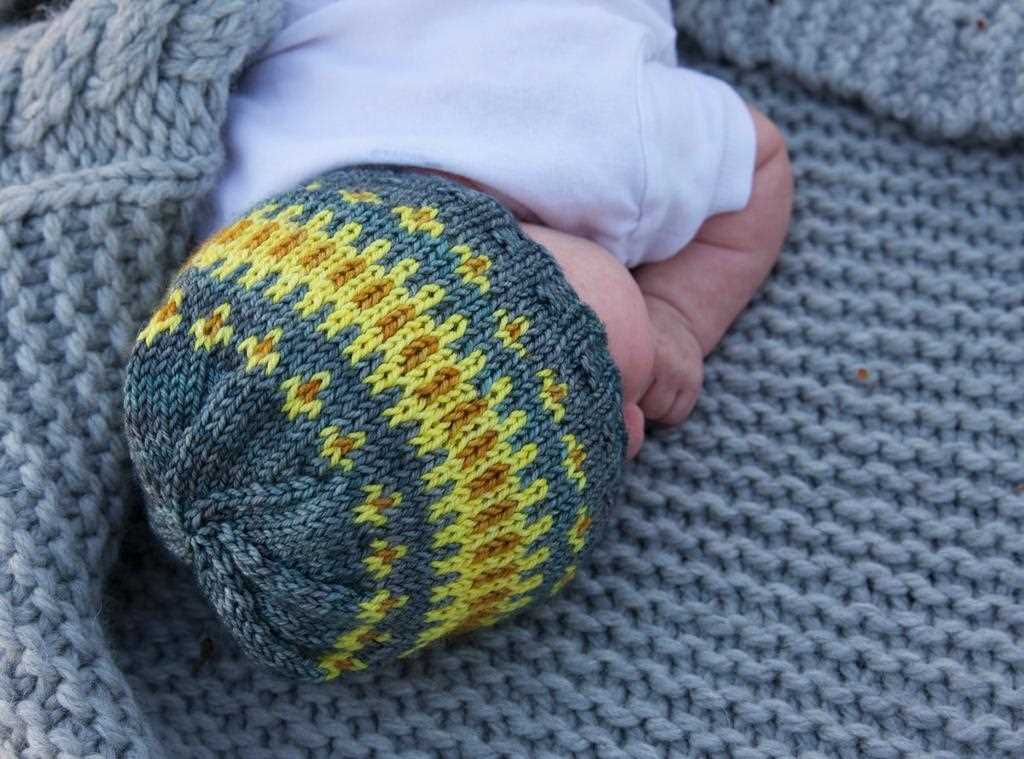
- Handmade touch: Knitting a baby hat allows you to create a one-of-a-kind item that’s full of love and care.
- Customization: With free baby hat knitting patterns, you can choose the colors, textures, and styles that suit your preferences.
- Practicality: Baby hats are essential items for newborns, helping to keep their heads warm and protected.
- Gifting: Hand-knit baby hats make thoughtful and meaningful gifts for baby showers, birthdays, or any special occasion.
- Portability: Knitting baby hats is a portable craft that can be easily taken with you on-the-go.
Whether you’re a beginner or an experienced knitter, knitting baby hats can be a rewarding and enjoyable project. With the plethora of free knitting patterns available, you’ll have endless options to choose from. From classic beanies to cute animal-themed hats, there’s a pattern out there to suit every style and skill level. So gather your yarn, needles, and pattern, and start knitting a precious baby hat today!
Popular Websites for Finding Free Baby Hat Patterns
When it comes to knitting adorable and cozy baby hats, there are several popular websites that offer a wide range of free patterns. These websites cater to both beginners and experienced knitters, ensuring that there is something for everyone. Whether you’re looking for simple and basic designs or more intricate patterns, you’re bound to find the perfect baby hat pattern on these sites.
1. Ravelry:
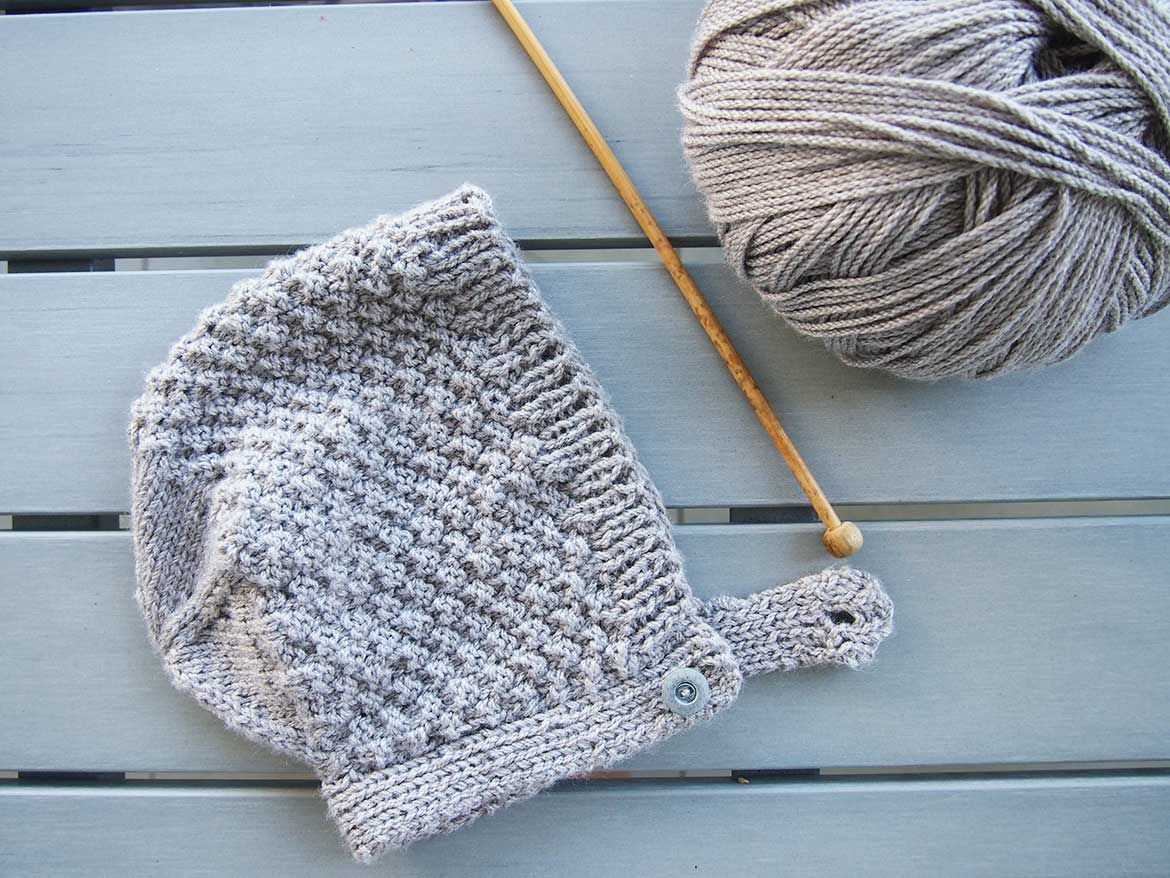
Ravelry is a fantastic resource for knitters, and it’s no exception when it comes to baby hat patterns. With thousands of free patterns available, you can browse through different styles, sizes, and skill levels. The website allows users to filter their search based on criteria such as yarn weight, needle size, and color, making it easy to find the perfect baby hat pattern for your needs.
2. LoveCrafts:
LoveCrafts is another popular website that offers an extensive collection of free baby hat patterns. The site features patterns from both independent designers and established brands, ensuring a diverse range of options. LoveCrafts also provides helpful tools and resources, such as video tutorials and size guides, to assist knitters in creating beautiful and well-fitting baby hats.
3. AllFreeKnitting:
AllFreeKnitting is a treasure trove of free knitting patterns, including a vast selection of baby hat patterns. The website offers patterns for various knitting techniques, such as cable knit, fair isle, and seed stitch, allowing you to explore different styles and textures. You can easily navigate the site using their search filters and categories, ensuring a seamless browsing experience.
With the abundance of free baby hat patterns available on these popular websites, knitters can easily find inspiration and create personalized hats for little ones. Whether you’re a seasoned knitter or just starting, these websites provide the necessary resources and guidance to make your baby hat knitting journey enjoyable and successful.
Step-by-step instructions for a basic baby hat pattern
Knitting a baby hat is a fun and rewarding project that can be completed in just a few hours. Whether you are a beginner or an experienced knitter, this step-by-step guide will help you create a cute and cozy hat for your little one.
Materials needed:
- Worsted weight yarn in your preferred color
- Size 8 (5mm) knitting needles
- Sewing needle
- Scissors
Instructions:
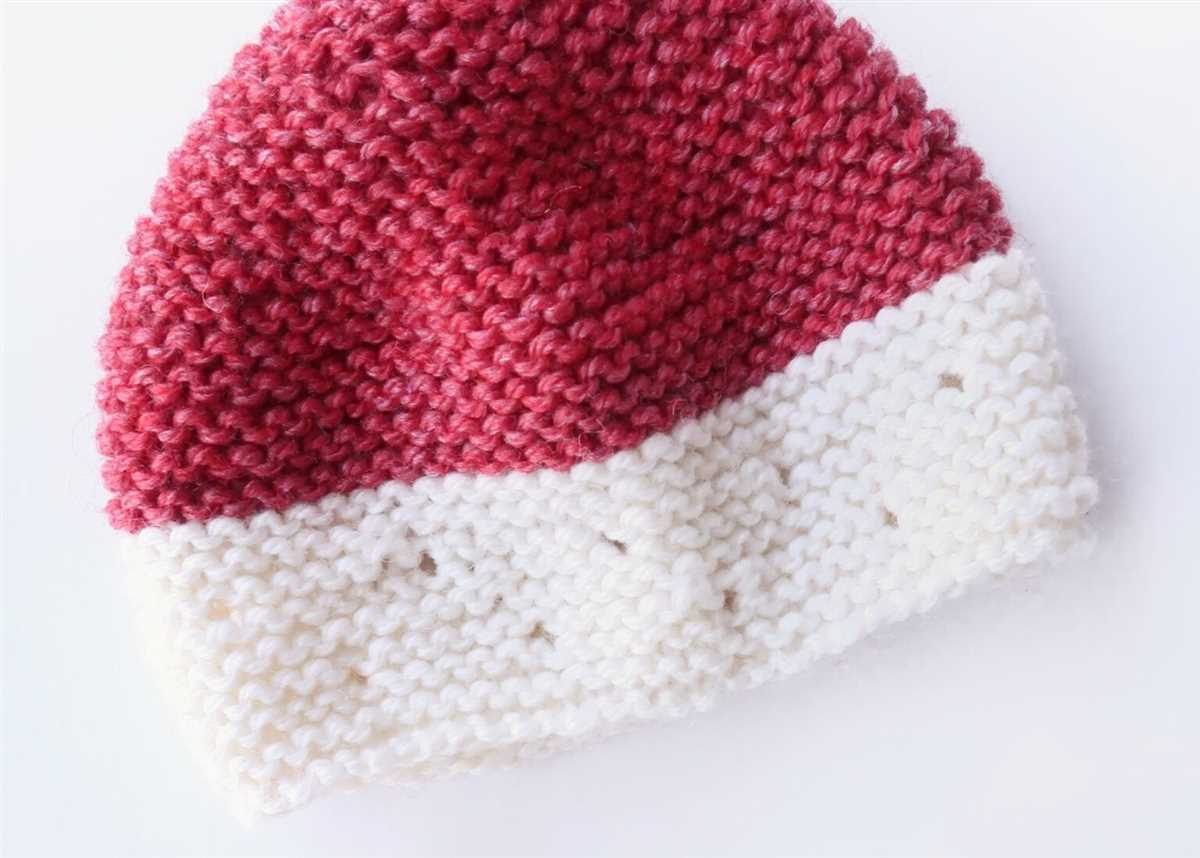
Step 1: Cast on 72 stitches using your knitting needles.
Step 2: Begin knitting in the round, using a circular or double-pointed needles, making sure to join the stitches in a circle. This will create the brim of the hat.
Step 3: Knit every stitch in each round until the brim measures approximately 1 inch.
Step 4: Switch to stockinette stitch by knitting one round and purling the next round. Continue this pattern until the hat measures approximately 5 inches from the brim.
Step 5: Decrease rounds: *Knit 6 stitches, knit 2 stitches together* Repeat this pattern around the circle. Continue knitting one round in between decrease rounds until you have a total of 9 stitches remaining.
Step 6: Cut the yarn, leaving a long tail. Thread the tail through the sewing needle and slip the needle through the remaining stitches, removing them from the knitting needle. Pull the tail tight to close the top of the hat.
Step 7: Weave in any loose ends and trim excess yarn.
Congratulations! You have now completed a basic baby hat using a simple knitting pattern. This hat can be personalized by adding embellishments such as pom-poms or ribbons.
Tips and Tricks for Knitting Baby Hats
Knitting baby hats is a fun and rewarding project that allows you to create adorable and practical accessories for the little ones in your life. Whether you’re a beginner knitter or an experienced crafter, here are some tips and tricks to help you create beautiful and comfortable baby hats.
Choose the Right Yarn
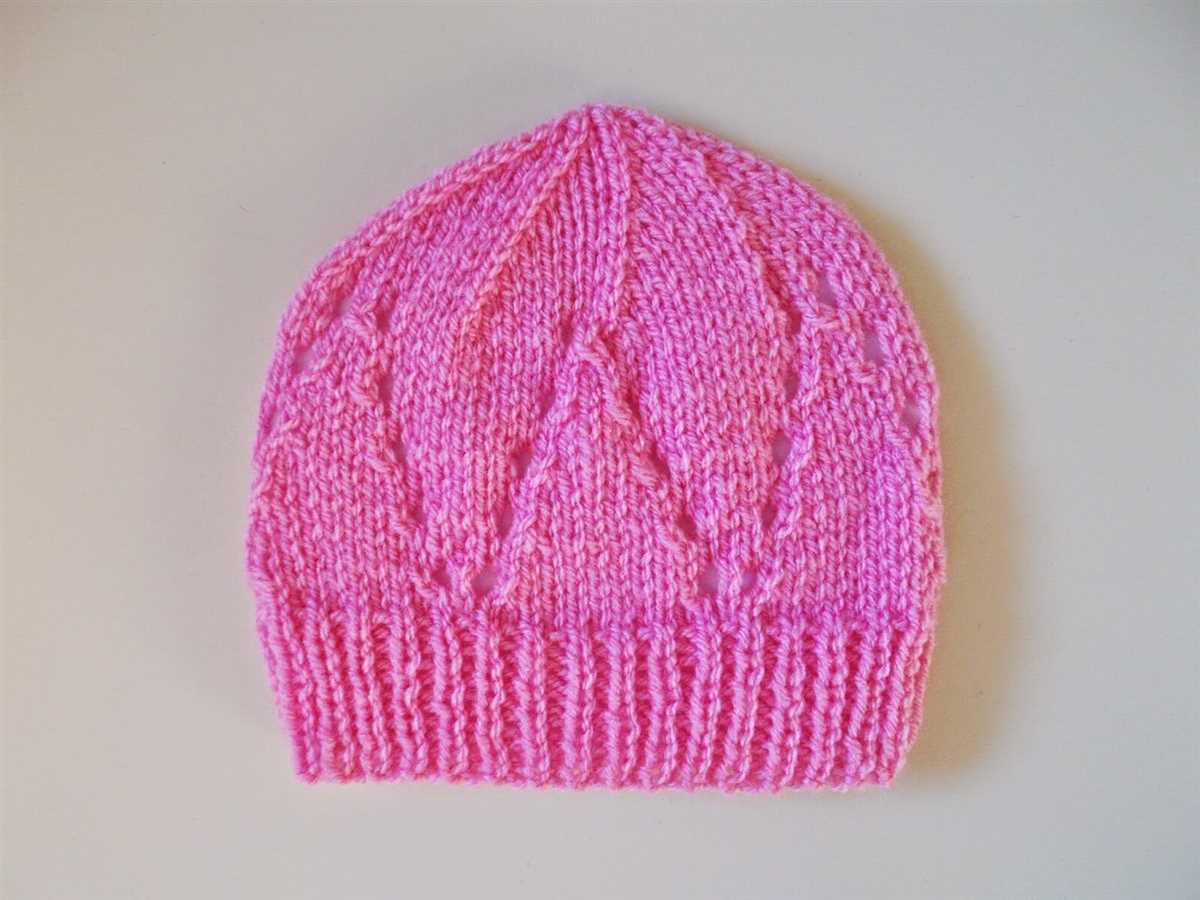
When knitting baby hats, it’s important to choose a soft and gentle yarn that won’t irritate a baby’s delicate skin. Look for yarn that is specifically designed for baby projects, such as baby alpaca or merino wool. These yarns are super soft and hypoallergenic, making them perfect for baby hats.
Use the Right Needle Size
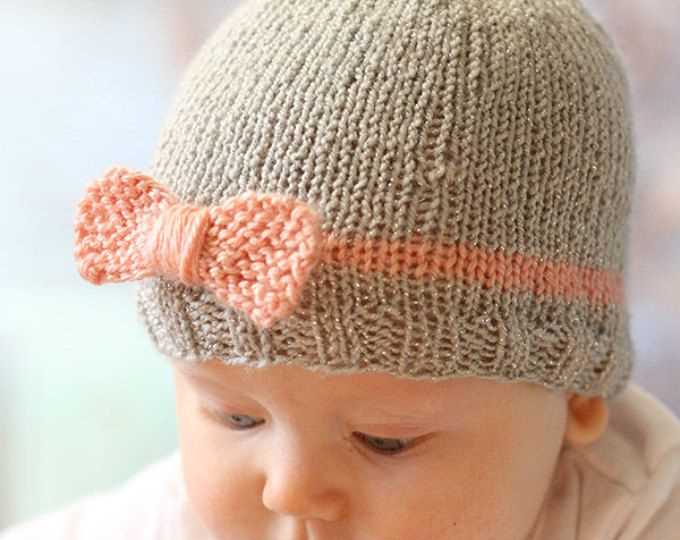
Choosing the right needle size is crucial for achieving the correct gauge and creating a well-fitted baby hat. Depending on the yarn you choose, you may need to use different needle sizes. Be sure to check the recommended gauge for the pattern you’re using and adjust your needle size accordingly.
Start with a Stretchy Cast-On
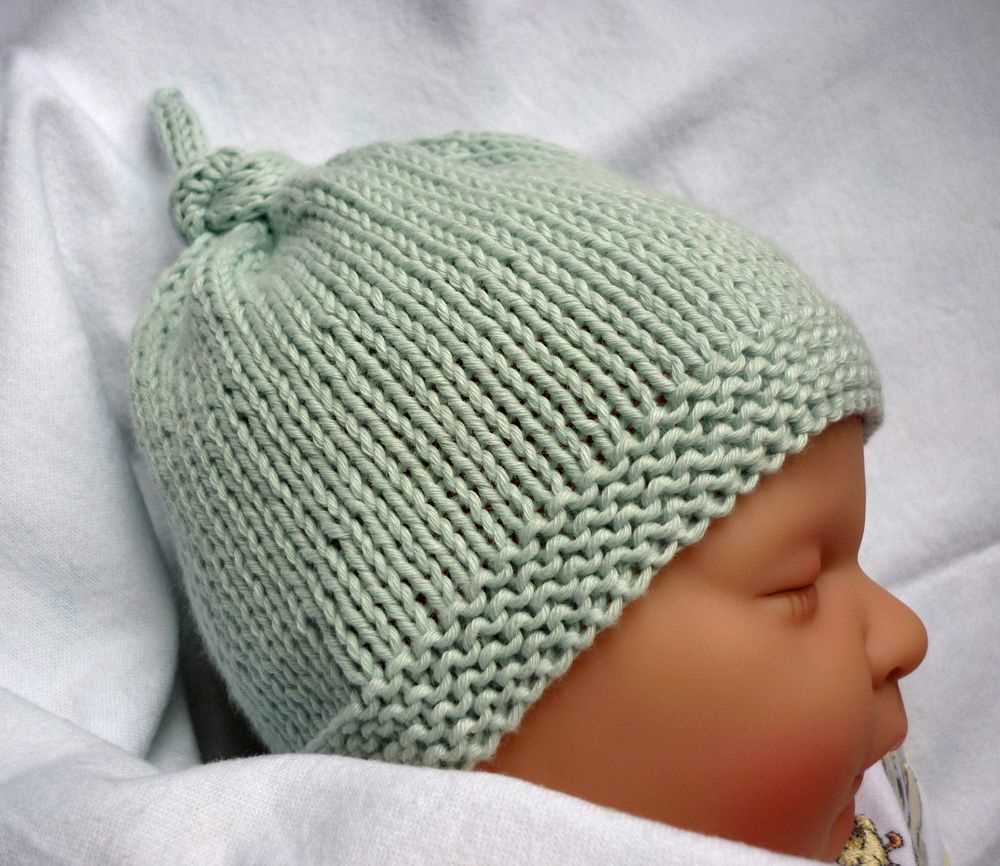
When knitting baby hats, it’s important to use a cast-on method that is stretchy and will allow the hat to fit comfortably on the baby’s head. One popular option is the long-tail cast-on, which creates a flexible and elastic edge. This will ensure that the hat stays in place without being too tight.
Keep the Stitches Tight
When knitting baby hats, it’s important to keep your stitches tight to create a dense and warm fabric. Loose stitches can result in a hat that is too loose and doesn’t provide enough warmth. To achieve tight stitches, you can try using a smaller needle size or adjusting your tension while knitting.
Add a Cute Embellishment
To make your baby hat even more adorable, consider adding a cute embellishment. This can be a small pom-pom, a bow, or some fun buttons. Just make sure to securely attach any embellishments and avoid small pieces that could pose a choking hazard.
With these tips and tricks in mind, you’ll be able to create beautiful and comfortable baby hats that will keep the little ones stylish and cozy. Enjoy the process of knitting and gifting these special accessories to your loved ones.
Avoiding Common Mistakes When Knitting Baby Hats
Knitting baby hats can be a rewarding and enjoyable experience, but it’s important to be aware of some common mistakes that can be made along the way. By avoiding these mistakes, you can ensure that each baby hat you knit is of the highest quality and will be comfortable and safe for the little ones who will wear them.
Here are some key tips to consider:
- Choosing the right yarn: Make sure to select a soft, washable yarn that is suitable for a baby’s sensitive skin. Avoid using yarns that have a lot of fuzz or shedding, as this can be a choking hazard.
- Following the pattern: It’s essential to closely follow the knit pattern provided, paying attention to gauge and stitch count. Any deviations may result in an ill-fitting or misshapen hat.
- Tension: Maintain consistent tension throughout your knitting to ensure an even fabric. Tight tension can result in a small, tight hat, while loose tension can create a hat that is too large and floppy.
- Seaming: Take the time to carefully seam your hat, ensuring that the stitches are secure and there are no gaps or holes. A neat and sturdy seam will make the hat durable and comfortable for the baby.
- Finishing touches: Pay attention to the finishing touches, such as properly weaving in ends and blocking the hat to give it a polished look. These final steps can make a significant difference in the overall appearance and quality of the hat.
By keeping these tips in mind, you can avoid common mistakes and create beautiful, well-made baby hats. Remember to always knit with love and care, knowing that your creations will keep little heads warm and cozy.